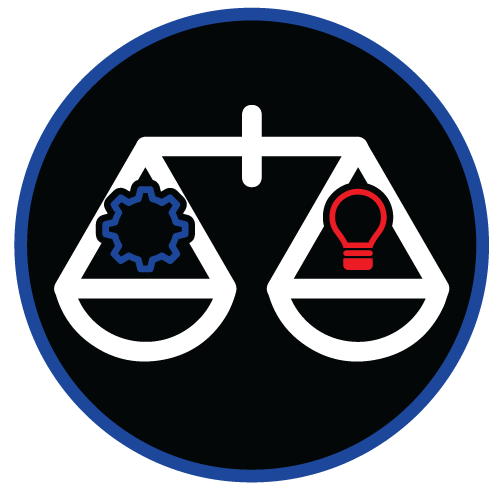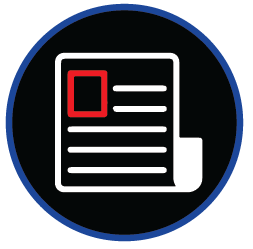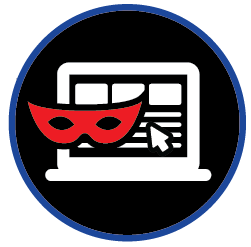
Subdomain Takeover Susceptibility
The Subdomain Certainty Mandate: Eliminate Prioritization Paralysis and Protect Your Security Rating
The high cost of unvalidated alerts, combined with alert overload, burdens the modern CISO and VP of SecOps. Your teams are overwhelmed by ambiguous CNAME alerts, leading to expensive manual searches and prioritization paralysis. The Subdomain Takeover Susceptibility Security Rating from ThreatNG, powered by the Subdomain Intelligence Module within the Domain Intelligence Investigation Module, shifts your approach from doubt to certainty about subdomains. We remove guesswork by providing decisive security insights, ensuring that every flagged risk is a confirmed exploit path, not just a potential alert.

Quantifiable Validation ROI: End Multi-Day Manual Fire Drills
We replace the costly, resource-draining effort of manual verification with the core technical feature: the Specific Validation Check. This dynamic process instantly filters out the high volume of low-fidelity alerts, freeing your SecOps team from Chaotic Manual Searching and confirming only valid, exploitable risks in minutes. This delivers a measurable Validation ROI by restoring operational capacity previously lost to investigating false positives and accelerating remediation efforts against confirmed threats.
Definitive Executive Risk Certainty: Defend Brand Integrity and Preempt SEC Filings
An unvalidated, exploitable risk drastically increases your organization's exposure to mandated SEC Form 8-K filings—the ultimate sign of public, catastrophic failure—and immediately escalates Brand Damage Susceptibility. By confirming the critical "dangling DNS" state, ThreatNG’s assessment provides the objective evidence needed for Proactive Control. We move you beyond theoretical risk to the certainty of a confirmed exploit path, ensuring timely compliance and protecting your reputation with Strategic Clarity.

Strategic Clarity: Map Confirmed Risks to Business Impact
Technical findings are useless without a strategic context. Our Granular Vendor Hierarchy automatically categorizes confirmed, exploitable CNAMEs across critical service exposures—from Cloud & Infrastructure (signaling high Data Leak Susceptibility) to Marketing & Sales (signaling high BEC & Phishing Susceptibility). This structure empowers the CISO to align remediation efforts directly with GRC frameworks (HIPAA, GDPR, NIST CSF) and MITRE ATT&CK Initial Access techniques, transforming tactical fixes into strategically justified defense investments.
The Subdomain Takeover Susceptibility Security Rating: Definitive Validation Across Your Entire Vendor Ecosystem
The Subdomain Takeover Susceptibility Security Rating goes beyond passive DNS enumeration to provide Subdomain Certainty. Traditional methods detect CNAME records pointing to external services—known as "dangling DNS" vulnerabilities—but often lack the necessary validation, leading to Prioritization Paralysis for security teams. ThreatNG removes this operational confusion by performing a Specific Validation Check against our proprietary, comprehensive Validated Threat Catalog of commonly exploited third-party services, confirming that the CNAME resource is genuinely inactive or unclaimed. This guarantees that every high-risk finding affecting your rating is a verified, exploitable threat, not just guesswork. Our rating offers a definitive exposure analysis of all your external services, utilizing the Granular Vendor Hierarchy to categorize and contextualize risks across various vendor technologies. This ensures the assessment covers every potential third-party entry point an attacker could exploit to hijack a subdomain, providing Decisive Security Insight for immediate action.
Business & Utility
Monitoring
Status/Uptime
Documentation
Knowledge Bases
Miscellaneous
Other Services
Cloud & Infrastructure
Public Cloud
Storage &CDN
PaaS & Serverless
Edge & Delivery
CDN/Proxy
Customer Engagement
Support/Helpdesk
Service Desk
Interaction
Live Chat/Feedback
Develop & DevOps
Code Hosting
Version Control
API/Integration
API Management
Build & Deployment
Static Hosting
Tools
Developer Tools
Marketing & Sales
Landing Pages
Page Builders
Marketing Automation
CRM/Email
Website & Content
E-Commerce
Storefront Platforms
CMS & Blog
Content Management
Site Builders
Visual Designers
Portfolio/Creative
Creative Hosting

The Validated Threat Catalog: Definitive Prioritization of Exploitable Subdomain Risk
The foundation of the Subdomain Takeover Susceptibility Security Rating is the Validated Threat Catalog. This comprehensive list of over 60 external third-party services—from cloud providers to e-commerce platforms—functions as the definitive threat model for subdomain attacks. By meticulously cross-referencing discovered CNAME records against these commonly exploited services, ThreatNG rapidly transforms generic DNS reconnaissance into actionable intelligence. We go beyond mere discovery; this process is the crucial precursor to the Specific Validation Check, which confirms the "dangling DNS" state is truly inactive or unclaimed. This ensures your security teams focus their remediation efforts solely on the most critical, confirmed risks, enabling genuine targeted, risk-based prioritization against exposed assets.
Acquia, ActiveCampaign, AfterShip, AgileCRM, Aha, Anima, Apigee, AWS/S3, Bigcartel, Bitbucket, Brightcove, CampaignMonitor, Canny.io, Cargo, CargoCollective, Cloudfront, Desk, ElasticBeanstalk_AWS_service, Fastly, Feedpress, Freshdesk, Frontify, GetResponse, Ghost, Github, Help Juice, Help Scout, Helprace, Heroku, Hubspot, Instapage, Intercom, JetBrains, Kajabi, Landingi, LaunchRock, LeadPages.com, Mashery, MicrosoftAzure, Ngrok, Pantheon, Pingdom, Proposify, Readme.io, ReadTheDocs.org, Shopify, SimpleBooklet, Smartling, Smugmug, Statuspage, Strikingly, Surge.sh, Surveygizmo, Tave, Teamwork, Thinkific, Tictail, Tilda, Tumblr, Uberflip, Unbounce, UptimeRobot, UserVoice, Vend, Vercel, Webflow, WishPond, Worksites.net, Wordpress, ZendeskThreatNG Subdomain Takeover Susceptibility Score: Severity Levels Explained
The ThreatNG Subdomain Takeover Susceptibility Score employs a letter grading system (A-F) to communicate the severity of your subdomains' vulnerability to takeover attempts. This grading system aligns with the ThreatNG Digital Presence Triad, offering a clear risk assessment based on three key factors. Notably, the ThreatNG interface is user-friendly, ensuring that even non-technical users can grasp the grading system and act on its insights confidently.
Feasibility
This assesses how easy it would be for an attacker to exploit weaknesses and take over a subdomain. Grade A indicates a highly secure configuration with solid defenses against takeover attempts. Conversely, Grade F signifies a subdomain with readily exploitable weaknesses that could be easily compromised.
Believability
Evaluates the likelihood of attackers targeting your subdomains. A low score (A) suggests a low chance of being targeted, often due to factors like a subdomain's obscurity or lack of sensitive data. Conversely, a high score (F) indicates a high likelihood of being targeted due to the subdomain's critical functionality, association with a valuable brand, or presence in a targeted industry. The ThreatNG Subdomain Takeover Susceptibility Score applies to various industries, from finance to healthcare to retail, ensuring its relevance and usefulness to your organization.
Impact
Considers the potential consequences of a successful subdomain takeover. Grade A signifies minimal potential damage, such as a minor SEO impact. Grade F indicates a scenario with severe consequences, such as data breaches, financial losses, reputational damage, or the ability to launch further attacks from the compromised subdomain.
How the Grades Translate to Severity
A (Low Severity)
Your subdomains have robust security measures, low attacker interest, and minimal potential impact if compromised.
B (Moderate Severity)
While your subdomain configuration might have some weaknesses, attacker interest is still considered low, or the potential impact is manageable.
C (Medium Severity)
This indicates a balance between the ease of takeover (Feasibility), the likelihood of being targeted (Believability), and the potential consequences (Impact). Remediating these moderate risks is recommended to strengthen your subdomain security posture.
D (High Severity)
Your subdomains show vulnerabilities that could be exploited with moderate attacker interest or have significant consequences if compromised. Urgent action is needed to address these vulnerabilities and implement more robust security measures.
F (Critical Severity)
This signifies the highest risk scenario. Your subdomains have critical configuration weaknesses, are highly likely to be targeted, and could suffer severe consequences if taken over. Immediate remediation is crucial to prevent attackers from exploiting these vulnerabilities.
The ThreatNG Advantage
Considering all three factors (Feasibility, Believability, and Impact), the ThreatNG score surpasses a simple vulnerability scan. It prioritizes risks based on real-world scenarios, allowing you to focus resources on the subdomains with the most significant potential for exploitation. For instance, Company X was able to identify and secure a critical subdomain that was at high risk of takeover, preventing a potential data breach. This focus on the Digital Presence Triad helps organizations achieve optimal security outcomes by addressing the most critical subdomain takeover vulnerabilities.

Unveiling Subdomain Security Risks: Actionable Insights with ThreatNG
The ThreatNG Subdomain Takeover Susceptibility Score breaks the mold of traditional security ratings by offering a wealth of actionable insights fueled by a powerful combination of data and intelligence. This approach empowers organizations to manage subdomain security and prevent takeover attempts proactively. Without this solution, organizations are left vulnerable to subdomain hijacking, leading to severe consequences such as data breaches, financial losses, reputational damage, or the ability to launch further attacks from the compromised subdomain. Here's how ThreatNG delivers superior value:
Actionable Insights and Data-Driven Objectivity
ThreatNG goes beyond simply identifying vulnerable subdomains. By leveraging External Attack Surface Management (EASM) and Digital Risk Protection (DRP) capabilities, the score analyzes your entire digital ecosystem, including third-party vendors and your supply chain. This comprehensive view, bolstered by vast intelligence repositories, paints an objective picture of your subdomain takeover risk. With this data-driven approach, you gain actionable insights that pinpoint specific weaknesses, allowing you to prioritize remediation efforts and make informed decisions.
Continuous Monitoring and Improvement
ThreatNG isn't a one-time assessment. Its continuous monitoring capabilities provide ongoing security insights, allowing you to track progress on addressing vulnerabilities and identify new threats as they emerge. This feature empowers a proactive security posture, enabling you to adapt and improve your subdomain security posture over time, constantly reassuring your digital security.
Comparison and Benchmarking
The ThreatNG score allows for comparison and benchmarking against industry standards or your historical data. This comparative analysis helps you understand your subdomain security posture relative to others and measure the effectiveness of your remediation efforts over time.
Actionable Recommendations
The score doesn't just highlight problems; it provides clear, actionable recommendations for addressing subdomain takeover vulnerabilities. These recommendations are tailored to the specific details of your subdomain configuration and the identified risks. It empowers you to prioritize resources and focus your efforts on the most critical vulnerabilities that will have the most significant impact on strengthening your overall security posture.
Clear and Transparent Scoring
ThreatNG's scoring system is clear and transparent. Because it is substantiated by the results of EASM, DRP, and extensive intelligence repositories, the score provides a verifiable and objective assessment of your subdomain takeover risk. This transparency fosters trust and empowers stakeholders to confidently make informed security decisions, ensuring you are always well-informed about your digital security status.

A Multifaceted Approach to Security: Unveiling Weaknesses Beyond Subdomains
While crucial, the ThreatNG Subdomain Takeover Score is just one piece of the puzzle within ThreatNG's comprehensive security assessment suite. This suite offers a broader spectrum of Susceptibility and Exposure ratings that paint a holistic picture of your organization's digital security posture, encompassing subdomains and a wide range of external vulnerabilities. Here's why a multifaceted approach matters:
Interconnected Threats
Security vulnerabilities rarely exist in isolation. A subdomain takeover (Subdomain Takeover Susceptibility) could be leveraged to launch phishing attacks (BEC & Phishing Susceptibility), potentially damaging your brand reputation (Brand Damage Susceptibility). ThreatNG's suite helps identify and address these interconnected risks.
Targeted Risk Management
You gain a more comprehensive understanding of your risk landscape by assessing various vulnerabilities across different categories. It allows you to tailor your security measures to address the most critical threats, such as web application vulnerabilities (Web Application Hijacking Susceptibility) or potential data breaches (Data Leak Susceptibility) stemming
Supply Chain Security
Today's businesses rely on complex ecosystems. ThreatNG's assessments extend beyond your organization, providing visibility into the security posture of your vendors and partners (Supply Chain & Third Party Exposure). It empowers you to build resilience across your entire digital supply chain.
ThreatNG's Spectrum of Security Ratings:
BEC & Phishing Susceptibility
Assesses the risk of falling victim to Business Email Compromise and phishing attacks.
Brand Damage Susceptibility
Evaluate the likelihood of negative brand impacts due to security incidents, financial violations, or social responsibility concerns.
Breach & Ransomware Susceptibility
Assesses the likelihood of falling victim to ransomware attacks, considering exposed ports, known vulnerabilities, and dark web presence
Cyber Risk Exposure
This section provides a broad view of external attack surface vulnerabilities, encompassing the technology stack, cloud environments, and code exposure.
Data Leak Susceptibility
Measures the potential for data breaches based on cloud configurations, SaaS usage, and code repository security.
Mobile App Exposure
While Subdomain Takeover Susceptibility assesses risks related to a website's subdomains, DNS records, and SSL certificates, this rating evaluates vulnerabilities within an organization's mobile apps, such as exposed credentials and API keys. Both contribute to the overall external security posture by highlighting potential attack vectors that could compromise an organization.
ESG Exposure
Evaluate the organization's environmental, social, and governance practices to identify potential security risks.
Supply Chain & Third Party Exposure
Analyzes the security posture of your vendors and partners, highlighting potential vulnerabilities within your supply chain.
Web Application Hijacking Susceptibility
Analyzes web applications for vulnerabilities attackers could exploit.
Frequently Asked Questions: The Mandate for Subdomain Certainty
Strategic Risk and Operational Efficiency
-
Subdomain takeover risk is no longer a tactical cleanup task; it is a systemic threat to organizational accountability and public trust. A confirmed, exploitable takeover is a material security event that:
Jeopardizes the Security Rating: A successful breach often leads to a sharp, public downgrade of the organization’s Security Rating (A through F), impacting business development and third-party relationships.
Triggers SEC Disclosure: Such incidents increase Brand Damage Susceptibility and may trigger mandated public disclosures, such as SEC Form 8-Ks, signaling a financial and reputational crisis.
Exposes Regulatory Gaps: Takeovers of domains tied to customer engagement or cloud services facilitate Data Leak Susceptibility and can lead to severe penalties under frameworks like HIPAA, GDPR, and NIST CSF.
For the security executive, validated risk information is essential for ensuring regulatory oversight and protecting the company's financial and brand value.
-
The "High-Cost Burden" refers to the massive operational waste caused by Prioritization Paralysis. Existing discovery tools successfully perform DNS enumeration to identify CNAME records pointing to third-party services, but they stop short of determining whether the resource is truly exploitable. This uncertainty forces security teams into "chaotic manual searching" and manual verification—a "multi-day manual fire drill"—to verify exploitability across numerous vendor platforms. Our data shows that organizations using common External Attack Surface Management (EASM) tools can spend roughly 60% of their triage time confirming CNAME false positives. This operational inefficiency is the specific problem ThreatNG addresses.
-
The Validation ROI is quantified by the substantial staff hours and operational costs saved by avoiding the investigation of high volumes of false positives.
The platform delivers certainty by providing the definitive proof required to act immediately. For example, in large enterprise scenarios, the specific validation check has instantly filtered volumes of potential CNAME alerts (e.g., 1,200) down to only a handful of genuine, exploitable risks (e.g., 12). This replaces costly, manual verification processes with "decisive security insight executed in minutes".
Methodology and Technical Certainty
-
ThreatNG achieves definitive validation through a three-step process that moves beyond passive reconnaissance to a confirmed, exploitable risk :
Exhaustive Discovery: Initial external discovery and DNS enumeration identify CNAME records pointing to external services.
Comprehensive Cross-Reference: The system cross-references the external service hostname against its proprietary, curated Vendor List (acting as a validated threat catalog). This list includes over 60 commonly exploited services.
The Specific Validation Check: This core differentiator performs a dynamic check to confirm the CNAME is currently pointing to a resource that is unequivocally inactive or unclaimed on that specific vendor's platform. By establishing this prerequisite "dangling DNS" state, the risk is immediately prioritized for remediation.
If ThreatNG flags a subdomain, it is a guaranteed, confirmed risk, validated by an external adversary view.
-
The Granular Vendor Hierarchy ensures exhaustive coverage against modern Shadow IT risks and provides essential business context. Instead of just listing CNAMEs, ThreatNG structures confirmed risks into six critical exposure categories:
Cloud & Infrastructure: Includes PaaS and Serverless vendors (e.g., Heroku, Vercel, AWS/S3) that, if unclaimed, signal high Data Leak Susceptibility.
Development & DevOps: Covers Version Control and Static Hosting (e.g., Github, Bitbucket, Surge.sh) where confirmed risk suggests high Cyber Risk Exposure.
Marketing & Sales: Includes Page Builders and CRM platforms (e.g., Unbounce, Instapage, Hubspot) where takeover signals high BEC & Phishing Susceptibility.
Customer Engagement: Covers Service Desk and Live Chat tools (e.g., Zendesk, Intercom, Freshdesk) where they compromise customer data.
This categorization allows the CISO to understand the specific organizational impact of each confirmed vulnerability.
-
The platform eliminates the need for security teams to contextualize findings for leadership manually. Every validated subdomain takeover risk is automatically translated into strategic defense terms:
GRC Alignment: Confirmed external findings are directly mapped to relevant GRC frameworks, including PCI DSS, HIPAA, GDPR, NIST CSF, and POPIA, enabling accurate risk reporting and justifying compliance efforts.
MITRE ATT&CK Mapping: The confirmed exploit path (the "dangling DNS" state) is correlated with specific MITRE ATT&CK Initial Access techniques. This allows security leaders to move the discussion from "We found a technical issue" to "We closed a confirmed attack vector that compromises our Initial Access defense posture," ensuring investments are strategically aligned.
The ultimate goal is to deliver Strategic Clarity, transforming raw data into intelligence that empowers the CISO to stop guessing and start acting with objective confidence.

Security Ratings Use Cases
ThreatNG is a security rating platform enabling businesses to evaluate and monitor their security posture and that of their third-party vendors. By leveraging our extensive security information database, ThreatNG provides valuable insights into potential vulnerabilities and risk exposure, enabling organizations to take proactive measures to strengthen their security defenses. This section will explore some use cases where ThreatNG's security ratings can help organizations better understand their security posture and mitigate risk.


























